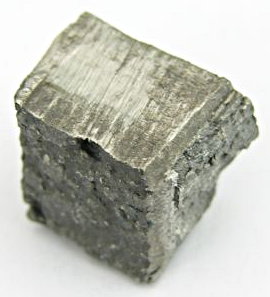(https://en.wikipedia.org/wiki/Dysprosium#/media/File:Dysprosium.jpg)
Properties
Dysprosium has the highest magnetic strength of any element, with a magnetic susceptibility of 5.44x10^-3. The magnetic properties exhibited are temperature (K) dependent:
- 00 - 85: ferromagnetic
- 85 - 179: antiferromagnetic
- 179 - 1680: paramagnetic
A highly valuable property of dysprosium is that it remains ferromagnetic at extremely cold temperatures.
As you can see, dysprosium has a very high melting point.
Dysprosium also has a high thermal-neutron absorption cross section. A thermal-neutron is a fancy way to say a "free" neutron. So, dysprosium has the physical characteristic of being a great neutron collector.
Applications
The most important use of dysprosium is as an additive in neodymium alloyed magnets. What dysprosium brings to the table is it's super ability to remain magnetic at high temperatures. Think of an electric motor. It generates an electric current by rotating a magnet around a coil of copper. You really want this magnet to be a neodymium/dysprosium alloy because it'll generate the greatest current at the hottest temperatures.
Because dysprosium is great at catching thermal-neutrons and has such a high melting point, it is used as an additive in nuclear reactor control rods.
Mixing dysprosium with iodide, distilling the salt, and running an electric current through it creates a very intense white light commonly found in halide discharge lamps. These bulbs are great for growing plants indoors and lighting up things that require synthetic sunlight, like your lizard or the poor guy stuck on the space station.
